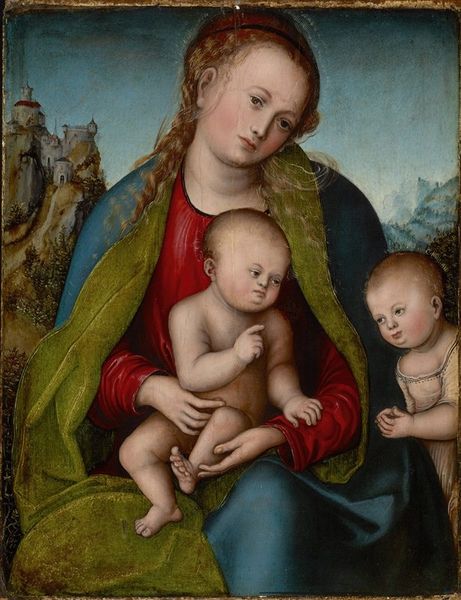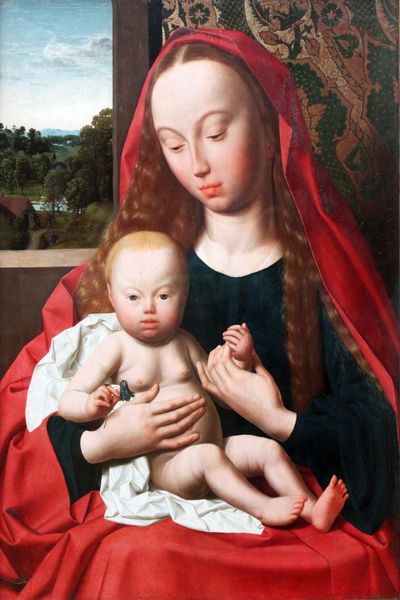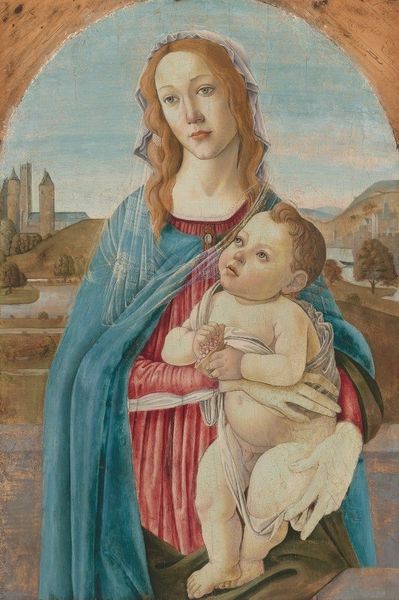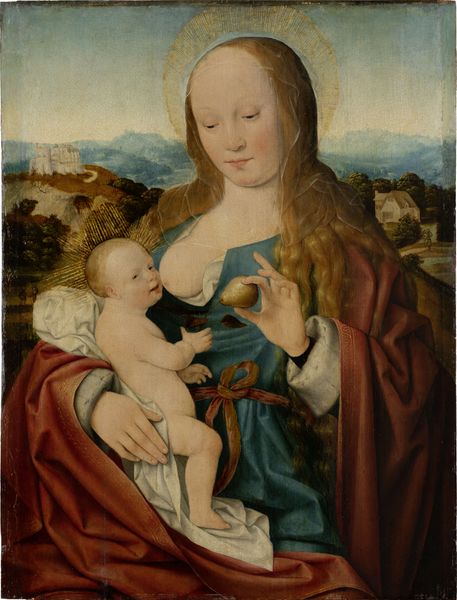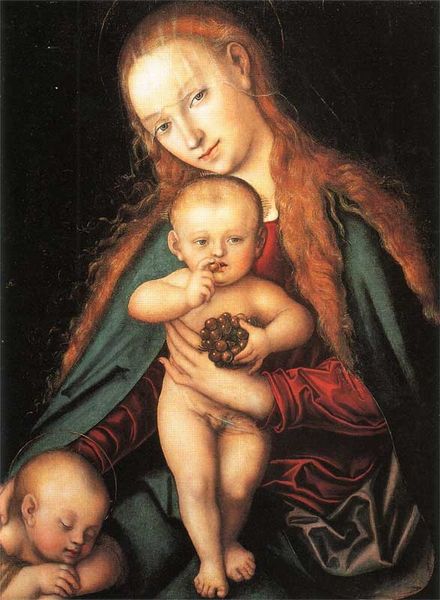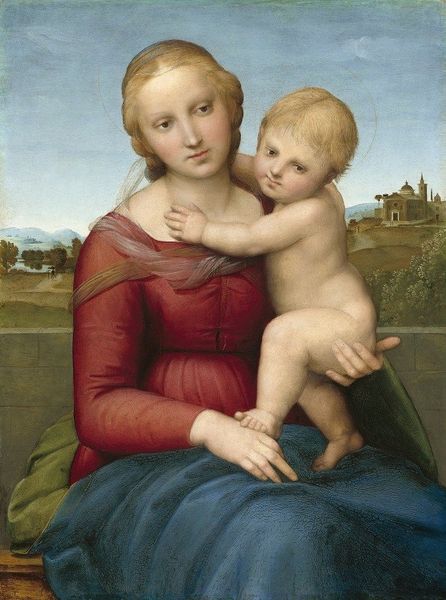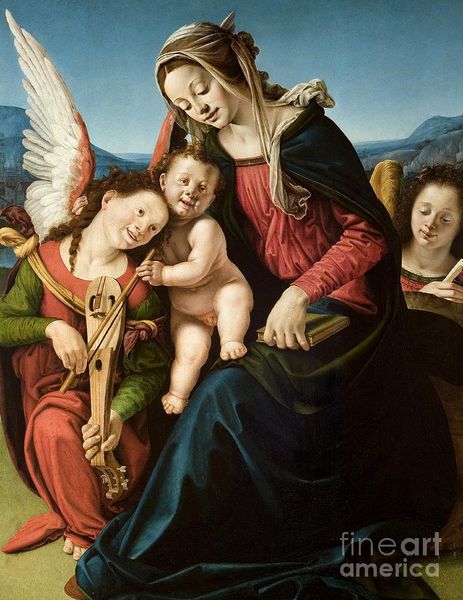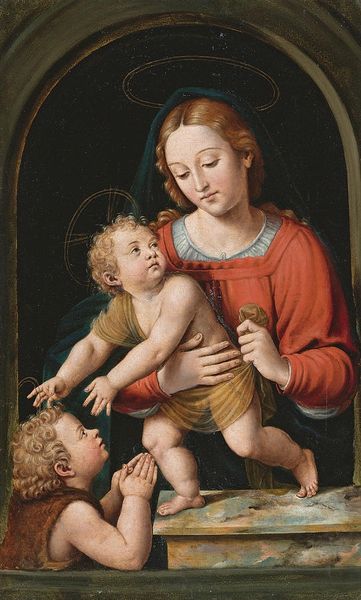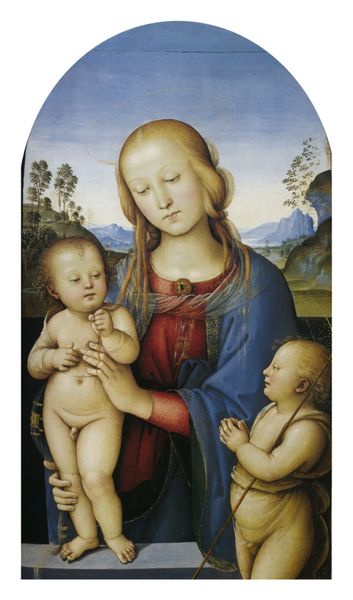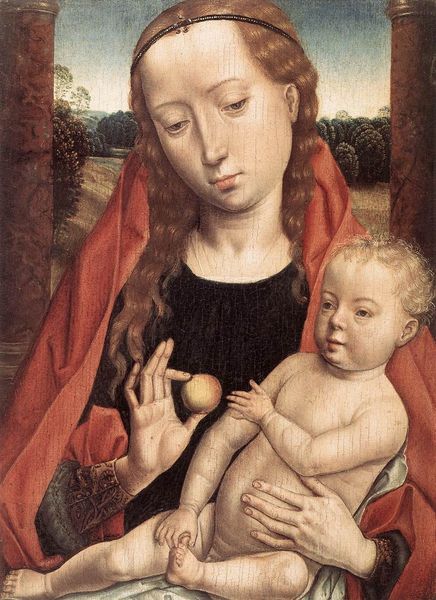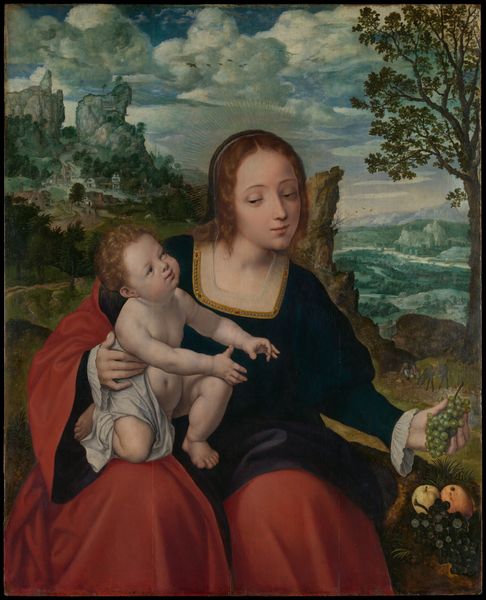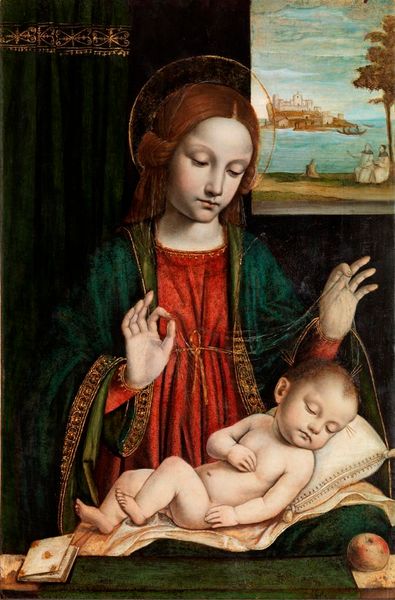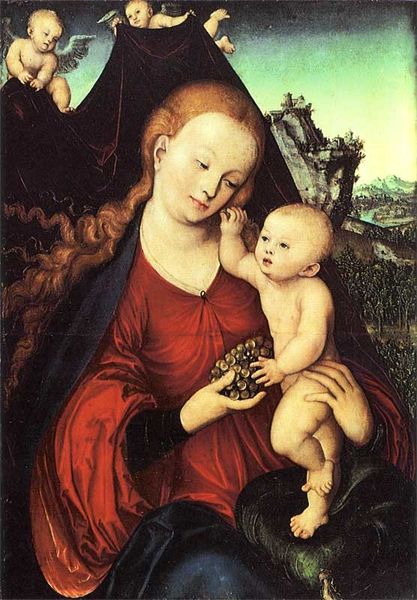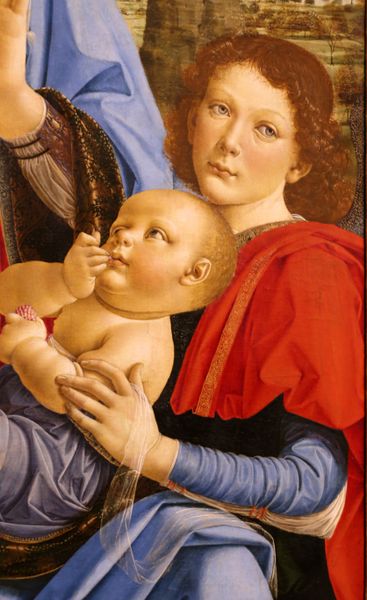
panel, tempera, painting, oil-paint
#
panel
#
allegory
#
tempera
#
painting
#
oil-paint
#
landscape
#
11_renaissance
#
history-painting
#
northern-renaissance
Copyright: Public Domain: Artvee
Curator: Before us, we have Lucas Cranach the Elder's "Virgin and Child," a tempera and oil painting on panel, dating back to circa 1515-1520. Editor: It's immediately striking, a somber mood almost. The Madonna's expression is contemplative, the child rather serious and heavy in her lap, not joyful or playful. It does evoke empathy though, a feeling of worldly concerns even in this holy scene. Curator: Interesting. Let's consider Cranach's historical context. Remember this piece emerges from the Northern Renaissance, amidst social and religious upheaval. His later association with the Reformation adds another layer of interpretation to these images. Do you feel this Madonna could symbolize a figure struggling within patriarchal structures? Editor: Absolutely. The grapes that Christ seems to grab—aren’t grapes often a symbol of Eucharist and sacrifice, as in Christian iconography? That visual vocabulary lends an additional weight to the infant. We also see those mischievous angels at the top holding a verdant textile. Are they displaying the Madonna? What are the meanings of this staging? Curator: Symbolism certainly played a key role in imbuing a deeper reading of artworks, connecting viewers to centuries-old traditions. And if we look at it now, it brings up fascinating questions about women in power structures then, about maternal roles still in social expectations now. Are they contradictory or reinforced, maybe? Editor: Right. This arrangement, it strikes me, draws parallels to depictions of royal presentations, of elevated status and public duty, but without any regalia that actually show earthly status. This staging invites us to explore more deeply into the symbolic register to read through layers of meaning. Curator: I agree completely. And looking closer to the background: What might that architectural fragment be on the landscape far behind? It feels like a deliberate detail added to contrast nature against man's constructs. Editor: That is well noted and adds a subtle intellectual dimension to it. The decaying fragment evokes an element of a fading glory to counterpoint a newly coming one, which is an example of symbolic memory ingrained to it, adding profound context to interpret this. Curator: It truly demonstrates how context can reshape our viewing and create a powerful intersection between then and now, past and present. Editor: And how a dialogue about iconography provides us the keys for access that past to a fresh and meaningful interpretation of that historical intersectionality in our present.
Comments
No comments
Be the first to comment and join the conversation on the ultimate creative platform.
